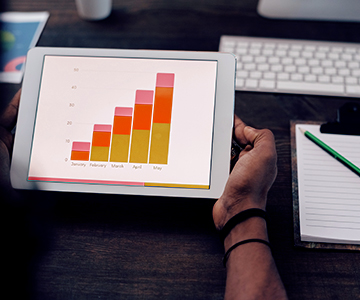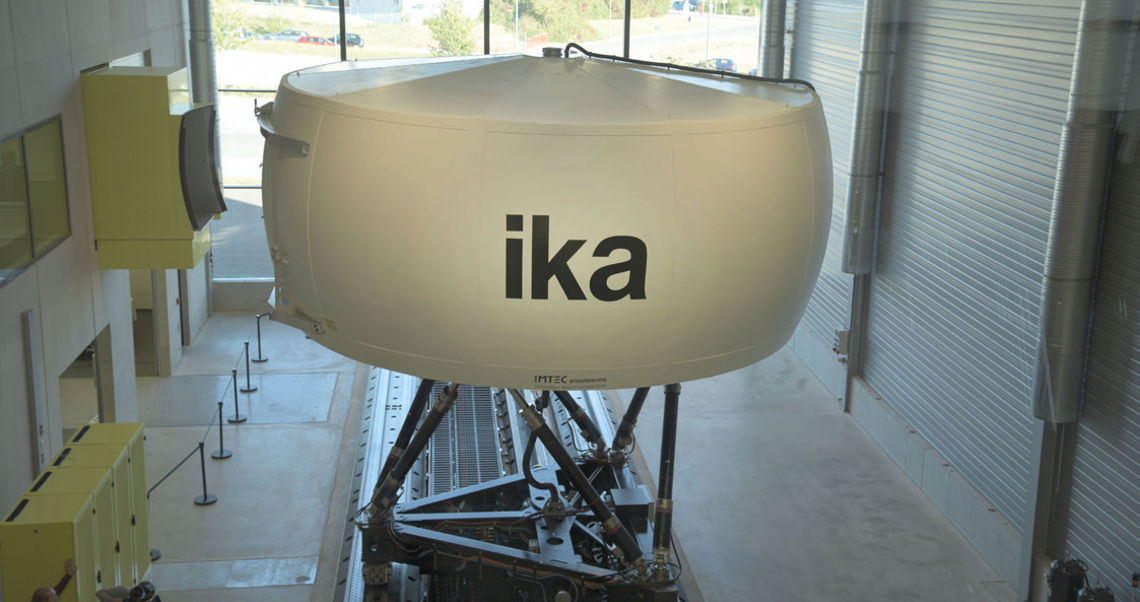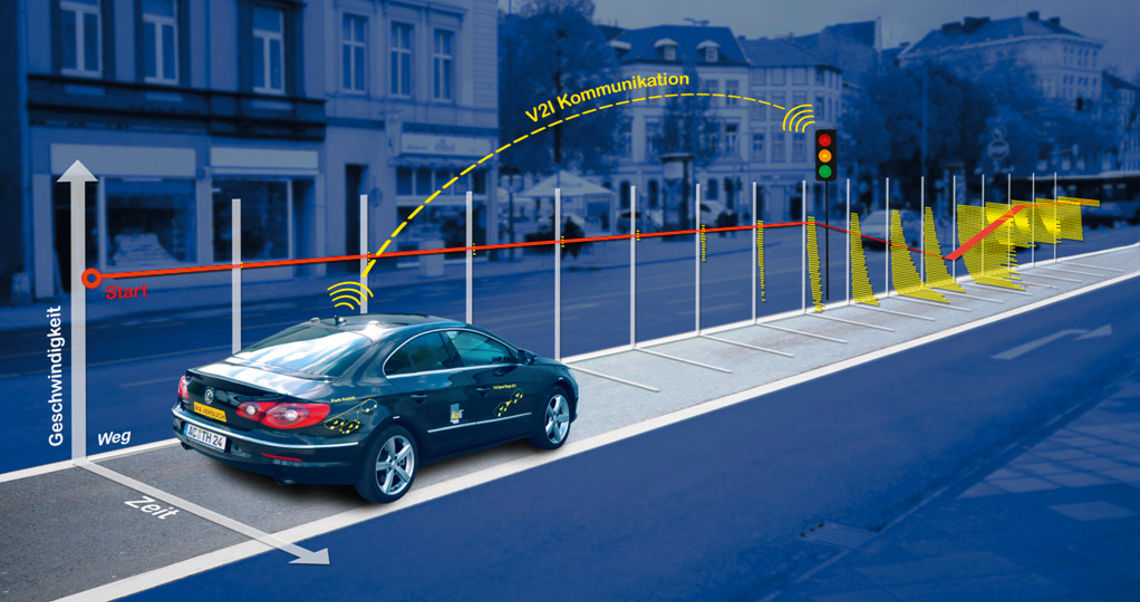![[Image: Research vehicle]](/images/artikel/fahrzeugflotte/Passat1140x300.jpg)
Test Vehicles: Bringing Driving Functions to the Road
After implementation and extensive module and simulation tests, it is usually necessary to test functionalities in a real vehicle. fka has the necessary methods, technologies and experience to test prototypical developments of functions in fka’s test vehicle and make them tangible. Furthermore, fka offers customers to modify and equip their vehicles according to their requirements.
fka's research vehicle
The research vehicle designed and built by fka is specially equipped for the development and testing of assistance and automation functions. This includes the equipment with an extensive sensor set for the perception of the vehicle environment. Lidar, radar and ultrasonic sensors, as well as cameras, but also acoustic sensors, detect relevant objects around the vehicle.
Via a communication interface based on the IEEE 802.11p standard, the vehicle can wirelessly receive externally available information, e.g. from other road users or infrastructure sensors, or provide corresponding data. If required, the current position of the vehicle and its state of motion can be determined with high accuracy using an RTK-GNSS system (Real Time Kinematics Global Navigation Satellite System). The overall setup therefore enables both a highly accurate localization and the detection of all static and dynamic objects in the environment (e.g. other road users).
Powerful computer hardware collects and processes the information. The measurement data are analyzed, fused from different sensor sources and interpreted, so that a complete picture of the vehicle environment is obtained. Furthermore, driving decisions and future actions of other road users are estimated. Based on this environment model, the optimal behavior for the driving situation is derived. With the specifications of this decision, a safe and comfortable trajectory for the automated vehicle is planned. From this, a controller calculates the necessary actuator signals to control the vehicle interfaces for longitudinal and lateral guidance.
Versatile application possibilities
The test vehicle can be used for a wide range of applications. Pure measurement drives can be carried out to generate extensive data sets, e.g. on the driving behavior of test persons or for the evaluation of perception functions. Iterative tests during the development of driving functions or demonstrations on the test track up to test person studies with driving functions can also be realized. Newly developed functions, components or algorithms can thus be quickly implemented and demonstrated in the test vehicle for developers, customers and test persons.
In order to give customers the opportunity to carry out their own tests, fka also offers complete or supplementary modifications of vehicles. This includes the conception, realization and installation of hardware solutions as well as the implementation of necessary software architectures. If necessary, required safety concepts and mechanisms can also be developed in parallel.
fka World of Research
![[Foto: people working in the background with a abstract image of a process as overlay]](/images/artikel/MBSE/Model_Based_Systems_Engineering.png)
Model-Based Systems Engineering
Introduction and implementation of the Model-Based Systems Engineering (MBSE) approach
We move away from the traditional document-based approach and instead rely on interconnected digital models. A system model serves as a shared platform for communication between all teams involved in development. It acts as a central source of information, ensuring that crucial data is always up to date and accessible.
Read more ...
Strategy & Consulting |
Strategy Teaser
Exciting short studies on innovations and developments in the automotive industry by our experts from Strategy & Consulting.
Read more ...![[Foto: VW ID.3]](/images/artikel/bench/id3/vw-id3-IF2_2262.jpg)
Continuous Bechmarking
VW ID.3 Benchmarking
fka & FEV Consulting launched the comprehensive benchmarking program.
Read more ...
![[Foto: Sensor equipment test vehicle]](/images/artikel/fahrzeugflotte/Passat-Sensoren.jpg)


![[Foto: Adrian Zlocki]](/images/personen/zlocki-adrian.jpg)